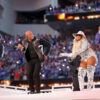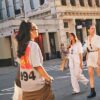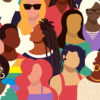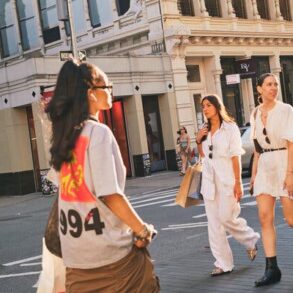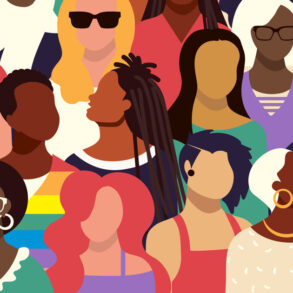“The first b-boys were dressed like young people from working-class neighborhoods, they didn’t really stand out. But from the 1970s, we saw a real evolution and they began to develop their own style,” he explains.
The boom of Pro-Keds
“And we see this evolution first in sneakers. For a long time, the Pro-Keds brand, which comes from basketball, was a reference in the neighborhoods and the B-Boys appropriated it quite quickly. Since they come from basketball, they are super comfortable shoes and therefore very practical for dancing.”
… and Puma Clydes
From 1977 and the riots due to the New York blackout (the city was plunged into darkness for two days following a general power cut), many young people went to loot clothes stores and rush to sneaker brands they couldn’t afford: Puma and Adidas. At Puma, lookers targeted the Suede and the Clyde as they were the two emblematic models of this period. The Clyde, which also comes from basketball since it was born from a collaboration between Puma and basketball player Walt Frazier.
Never without Lee jeans
The B-Boys pair these sneakers with Lee brand jeans. Close enough to the body but not too much, they allow them to be quite comfortable in their movements. Some will cut them to make shorts.
Kangol bell and baseball cap on the head
There are three styles of hats that will be worn by members of the hip-hop and breaking community. The most representative is probably the “Bell”, from the Kangol brand, a headgear that has the shape of a bell, therefore.
At the same time, in the early 1980s, breakers appropriated the caps worn by American baseball players. It is in particular the advent of the now cult Era that some breakers wear on the side, once again to stand out.
Nylon and K-Way tracksuits for sliding
In the early years of this decade, we see the appearance of Adidas nylon tracksuits. They are super comfortable and they allow you to slide more easily, especially on cardboard or pieces of linoleum. During this same period, many breakers adopted the K-Way for these same practical reasons. Members of the same crew then start wearing the same K-Way or the same tracksuits to be recognizable and identifiable as a group. It’s something that comes directly from the culture of the gang.
Flocked T-shirts and customized belts
Something that comes from that culture as well and that you see a lot in the 1980s are the t-shirts on which they flock the name of their crews. In this same desire for identity, we find the “name belt plate”, which was a belt that we could customize so that your name appeared on the buckle.
Close-fitting jumpsuits
Some will also try to differentiate themselves. I’m thinking of the New York City Breakers who are going to wear full suits reminiscent of gymnasts’ outfits. If these outfits are worn exclusively by the group, they are still emblematic because they have a history.
There is a process behind it, since they want to demonstrate that breakers are capable of challenging gymnasts in terms of performance. It didn’t become a fad among the B-Boys, but it made a big impression since they were on TV a lot, especially in the pilot program “Grafiti Rock” where they danced in front of the American president at the time. , Ronald Reagan.
In 1984, when the film “Beat Street” was released in cinemas, the dress style was popularized and everyone who was interested in this culture would adopt it. It’s not just for B-Boys anymore.
Still in the mid-1980s, the Run DMC group contributed to the development of tracksuits, since it signed a partnership with the Adidas brand. They democratize the three-stripe tracksuit and the Superstar.
Troop at the feet
At the end of the 1980s, a brand appeared and was a hit in the B-Boy milieu. Its owner had a shop in the Bronx where he sold unsold pairs. Many young people came to his house because it was cheap and he sold on credit. One day, he picked up a pair of white Pumas that he had graffiti artists design before reselling them. From there, he will create his own brand, Troops, which will take off thanks to the hip-hop community, and in particular L.L Cool J, who loves this brand and who wears it during his appearances. For a time, Troops would even overshadow brands like Nike and Adidas.
But the brand disappears as quickly as it appeared because of a rumor which begins to run – that the brand was created by members of the Ku Klux Klan to enslave black and Latino communities.
Timberland madness…
In the 1990s, clothing inspired by the world of construction sites appeared in hip-hop and B-boying culture. I think of the Timberland shoes that we see everywhere, of Carhartt for the pants. It was during this decade that brands that became cults were created: Fubu, Cross Colors, Karl Kani and Lugz.
… and the baggy as best friend
We also start to wear loose clothes. It was during this period that the baggy was created and we now know the importance it may have had.
04
From 2000 to today
Since the 2000s, hip-hop and B-Boy culture has become more democratic. It is no longer a counter-culture and we cannot really speak of cult pieces, specific to hip-hop fashion.
For example, wearing a tracksuit has become normalised. Today, the clothes we see in competition are shorts and t-shirts, two comfortable pieces that allow a certain freedom of movement. But of course, B-Boys and B-Girls aren’t the only ones wearing them. I personally find that a bit sad. The identity that breakers or hip-hop lovers have been able to create has been somewhat lost.”
Part of this story

